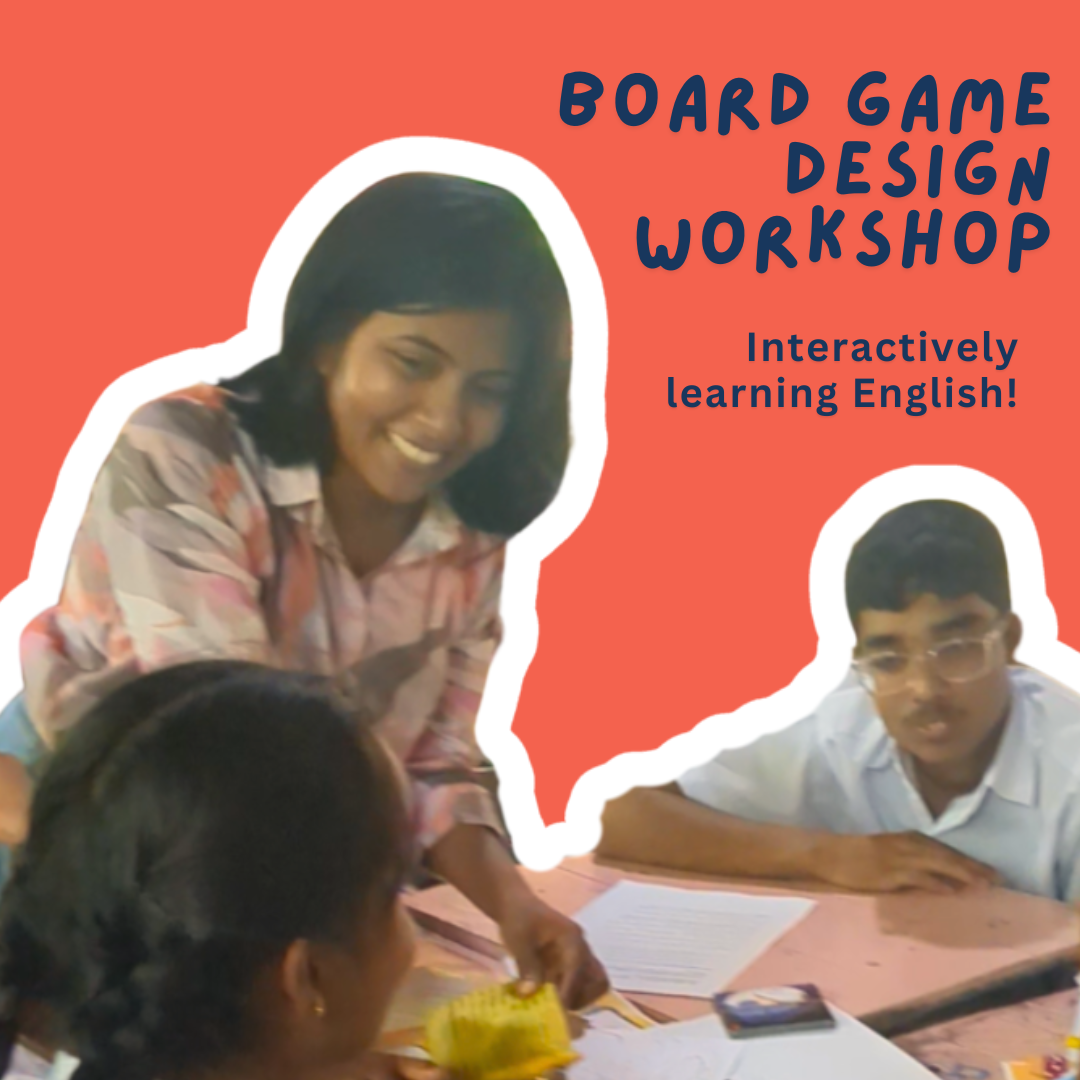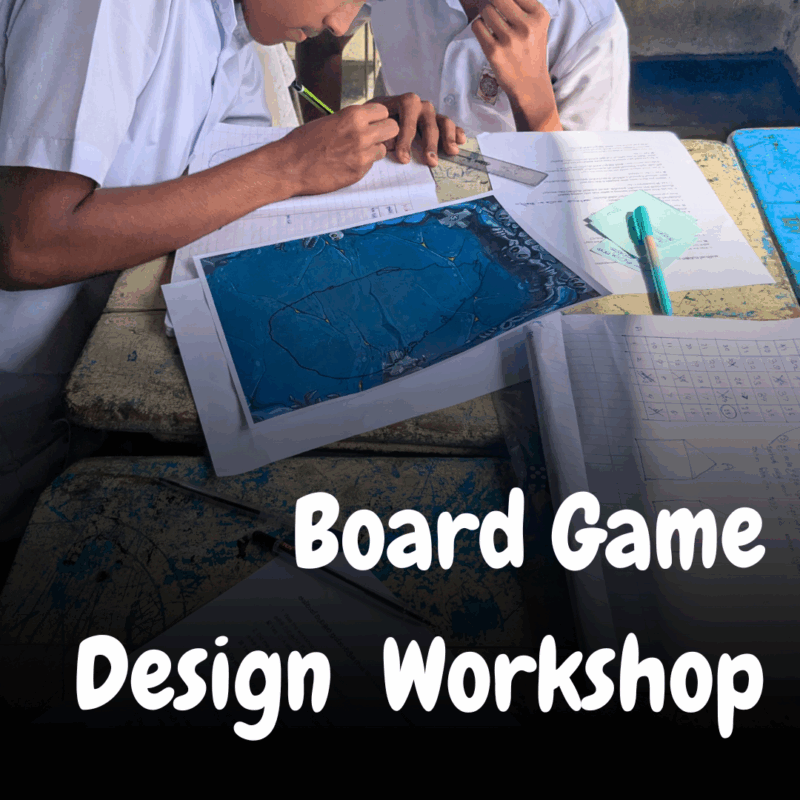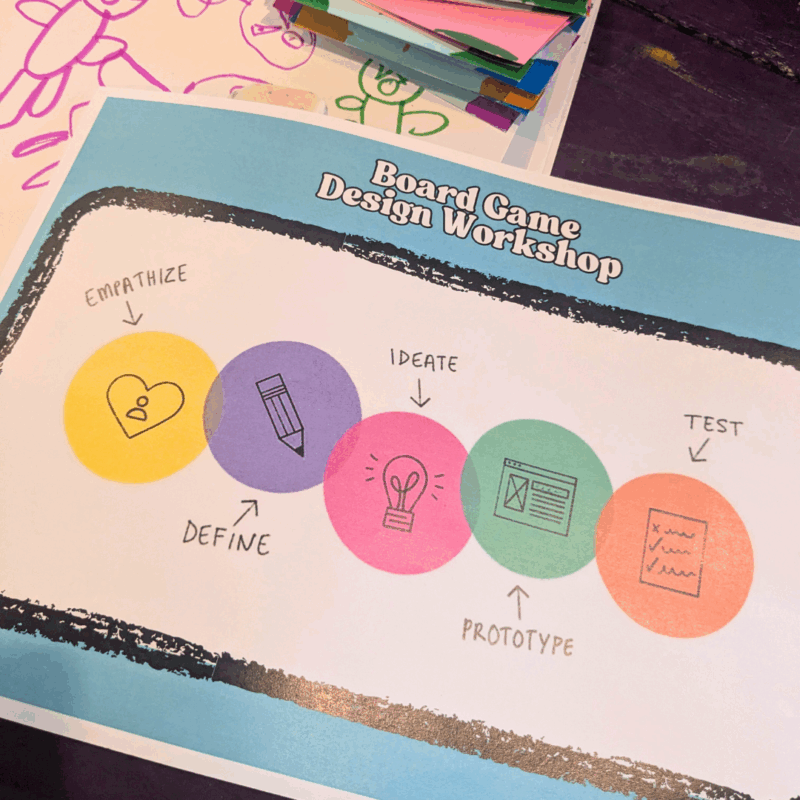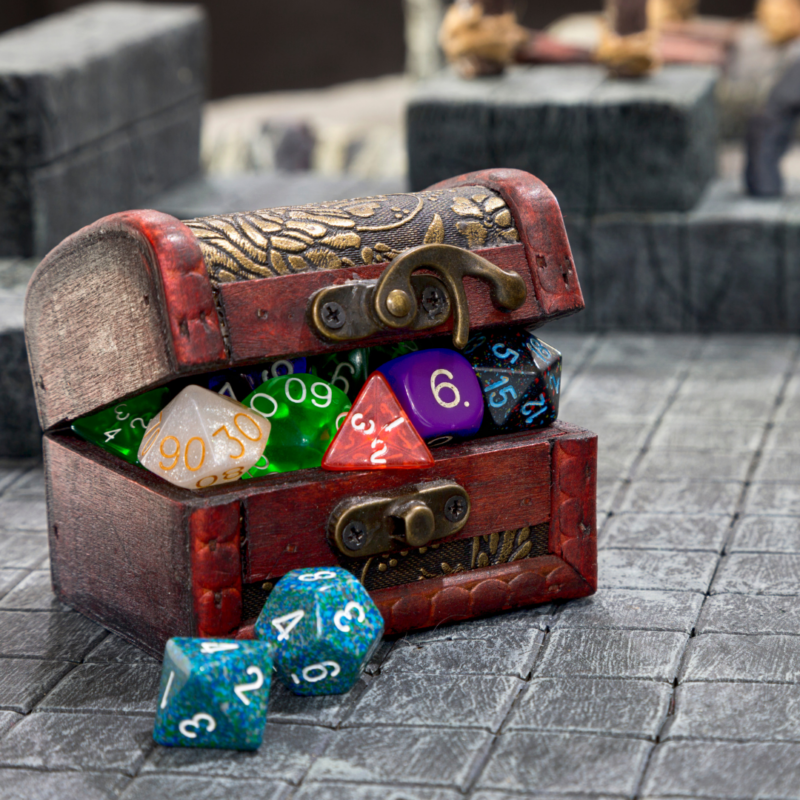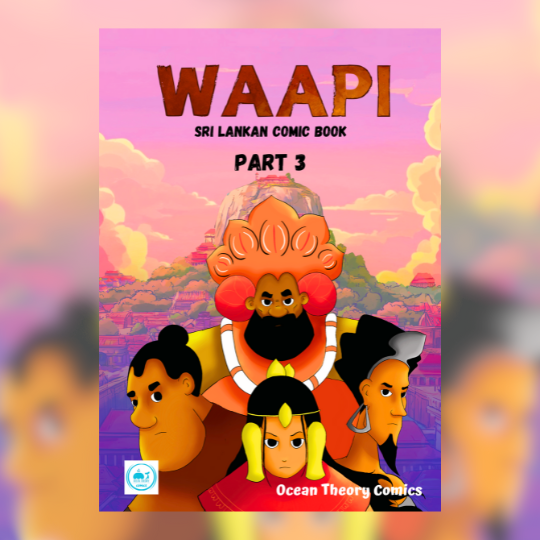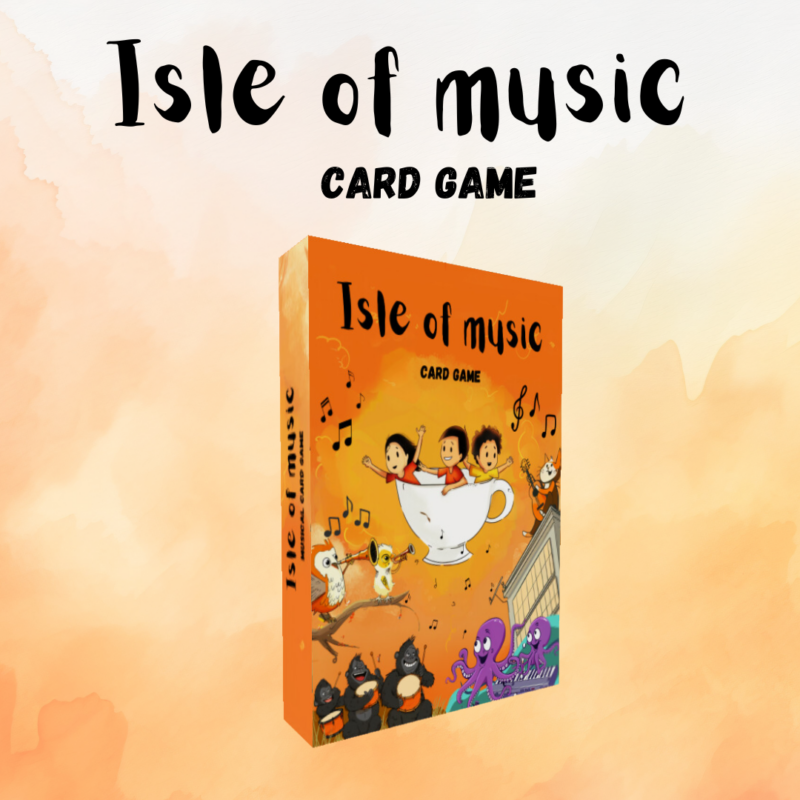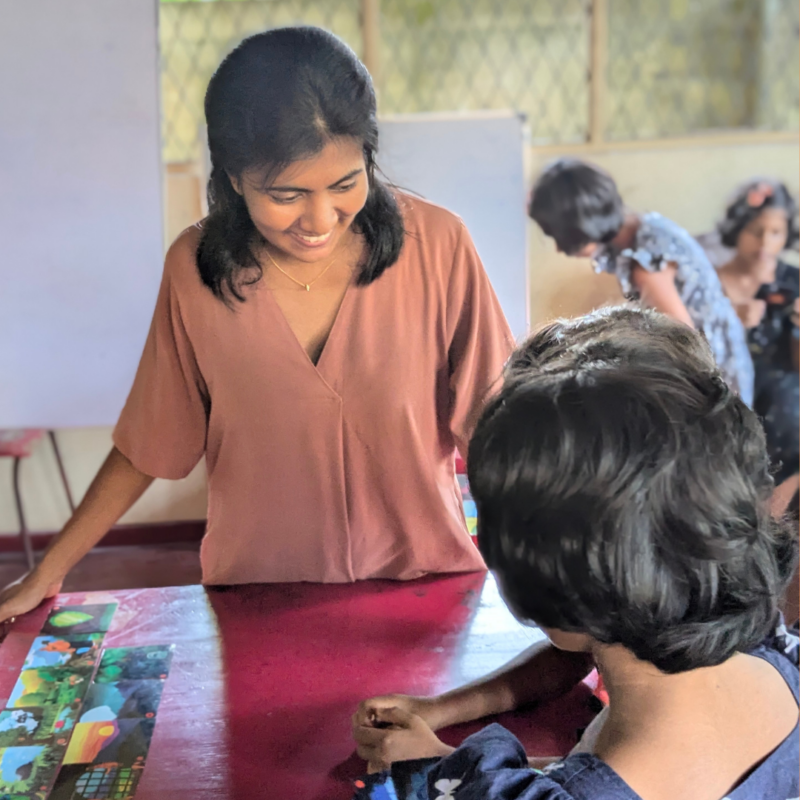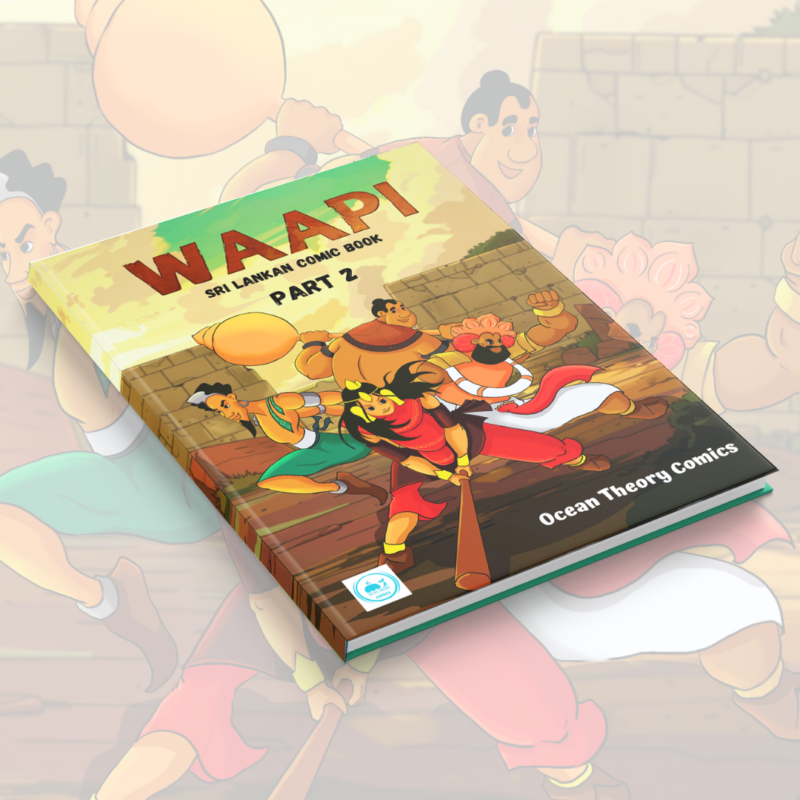We had an amazing opportunity to try out our Board Game Design Workshop with the Grade 10 students of Thaksala Maha Vidyalaya, Mahamukalanyaya, last week. We were super excited — and honestly a little nervous — about how to introduce a subject like English, which many kids at the school find challenging, in a way that felt fun and exciting through something like board games. We knew it wouldn’t be easy, and we really didn’t know what to expect. But what happened during the workshop completely blew us away. It comes as a powerful reminder of how interactive education can spark curiosity, build confidence, and unlock incredible creativity in young minds while teaching something meaningful through design thinking.
We began by dividing the 35 students into six groups and introducing them to the concept of Design Thinking. Keep in mind, this was an afternoon session, and most kids were ready to go home or play outside. So we had to start with something fun and welcoming. We gave each group a set of Snakes and Ladders and simply asked them to play. Many had played it when they were younger, so they were familiar and got into it quickly, laughing and enjoying themselves.
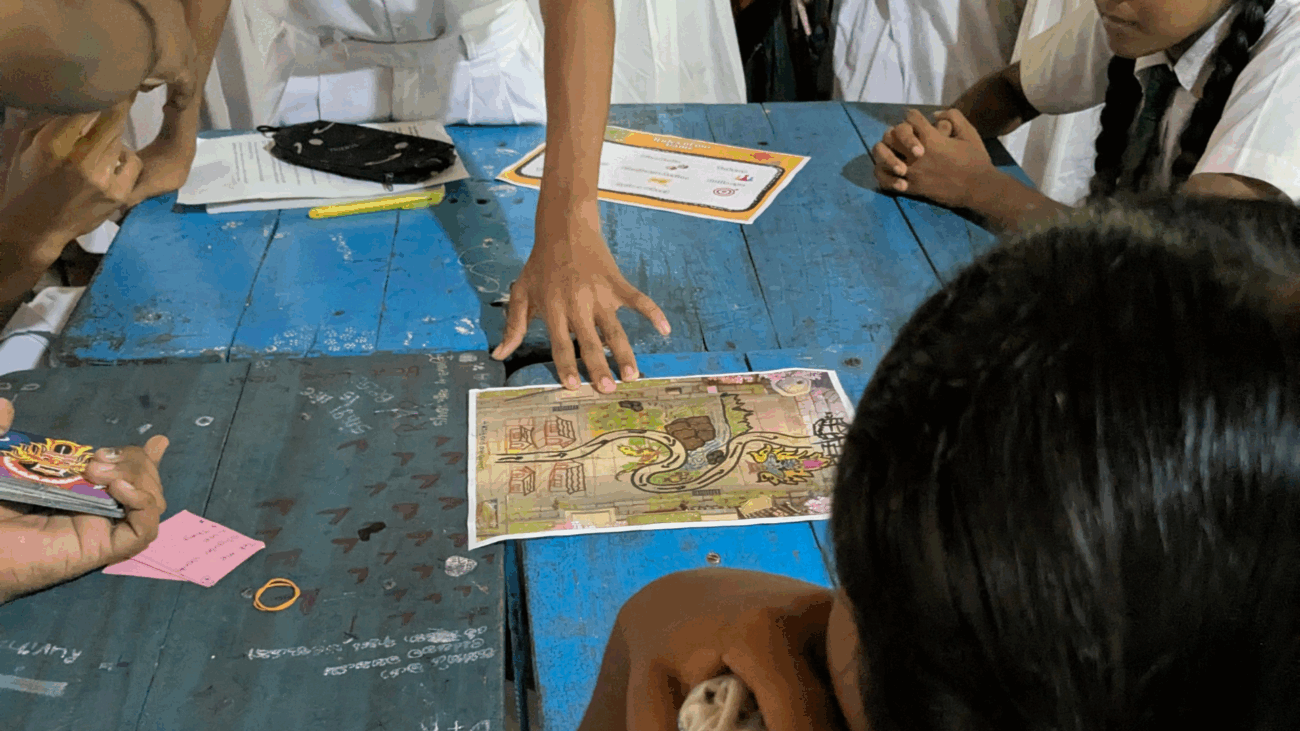
But this time, they weren’t just playing. We asked them to become designers and think—what could be changed? What would make this game more fun? What felt boring or too simple? And with that, they entered the Empathising phase of Design Thinking. It comes as the first step where you try to understand the user experience and see what can be improved.
We explained that the games they’d be designing would aim to improve English Language skills. But we didn’t push them too hard in one direction. They were free to think however they liked, and that freedom really mattered.
Then came the Define phase, where they had to figure out what kind of game they wanted to build. What was the theme? What was the purpose? What problem were they solving? Slowly, they started dreaming up their own worlds. Some wanted deep sea exploration, some imagined kingdoms of ancient queens and kings, others thought about crime detectives or mysterious Egyptian tombs.
As they became more engaged, we moved into the Ideation stage. This is where all the creativity comes rushing in. They started brainstorming mechanics, challenges, and clever ways to make learning English more fun. We introduced them to different game mechanics and encouraged them to incorporate grammar, vocabulary, speaking, and sentence-building into their games.
One group used cards for grammar questions, another made a spinning wheel that revealed challenges. One team even designed a 3D-style board with picture-based speaking activities. Some added levels of difficulty so the player’s English skill could be tested more dynamically. It was amazing to see them so involved, thinking not like students but like young teachers, trying to find the best way to help their friends learn English in a fun, creative way.
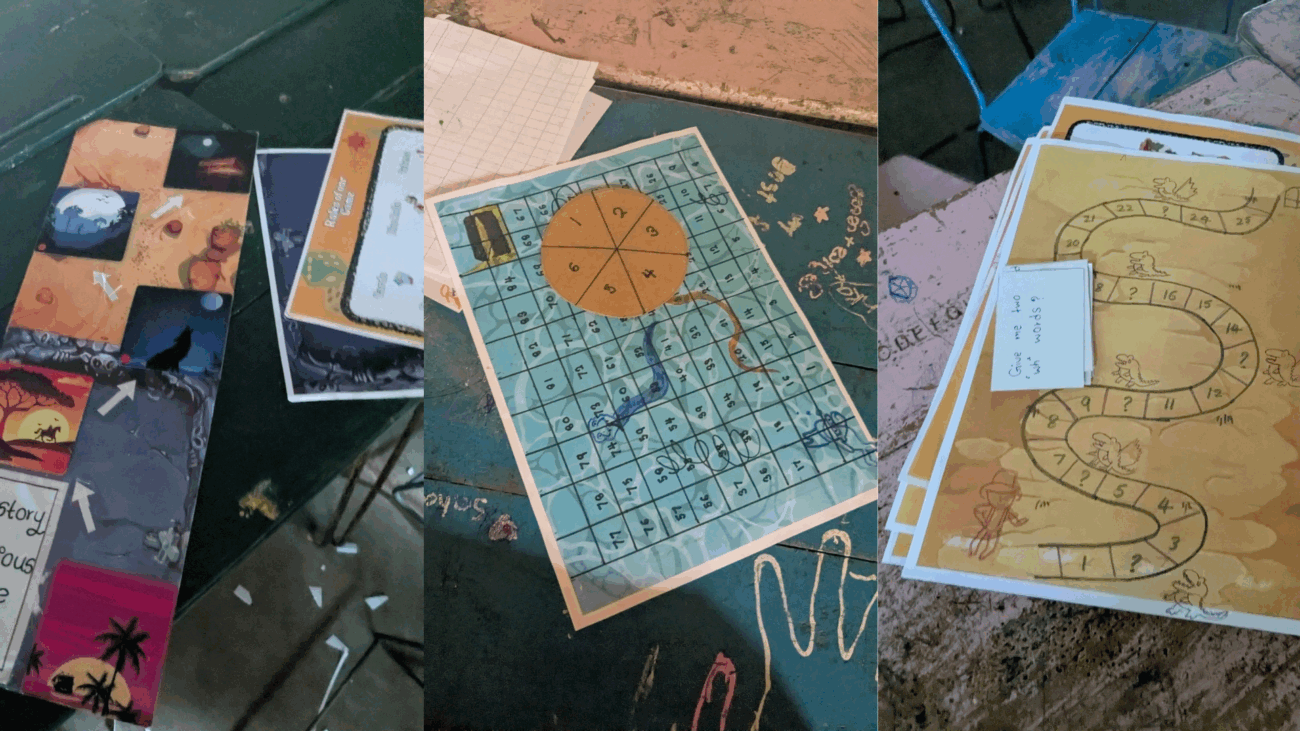
Next came Prototyping, where their ideas began to take shape. They picked up cards, markers, scissors, and started drawing, cutting, building, and writing. Some students were creating artwork, while others were writing the game’s rules. A few started making their own set of challenge cards. By this point, they had been working nonstop for nearly two hours.
We offered them a break, but most chose to stay and keep working. They were so deeply invested in what they were creating. We even heard later that two students who had gone home for other classes managed to sneak back in just to finish their games! It comes as a real surprise and a true sign of how engaged they were.
Finally, we arrived at the Testing stage. Each team invited another to come play their game. They explained the rules and watched proudly as the other group played. Even their English teacher, Miss Imalka, and the school principal joined to see what the students had made. For many of these kids, it was the first time they got to showcase their own ideas like this. They were proud of their work, of their effort, and of their learning.
After each game, the groups gave feedback on what they enjoyed and what could be improved. The spinning wheels sometimes didn’t spin perfectly, and some of the questions were a bit tricky. But that didn’t matter. What they had created, in just a few hours, was something imaginative and powerful using human-centred design.
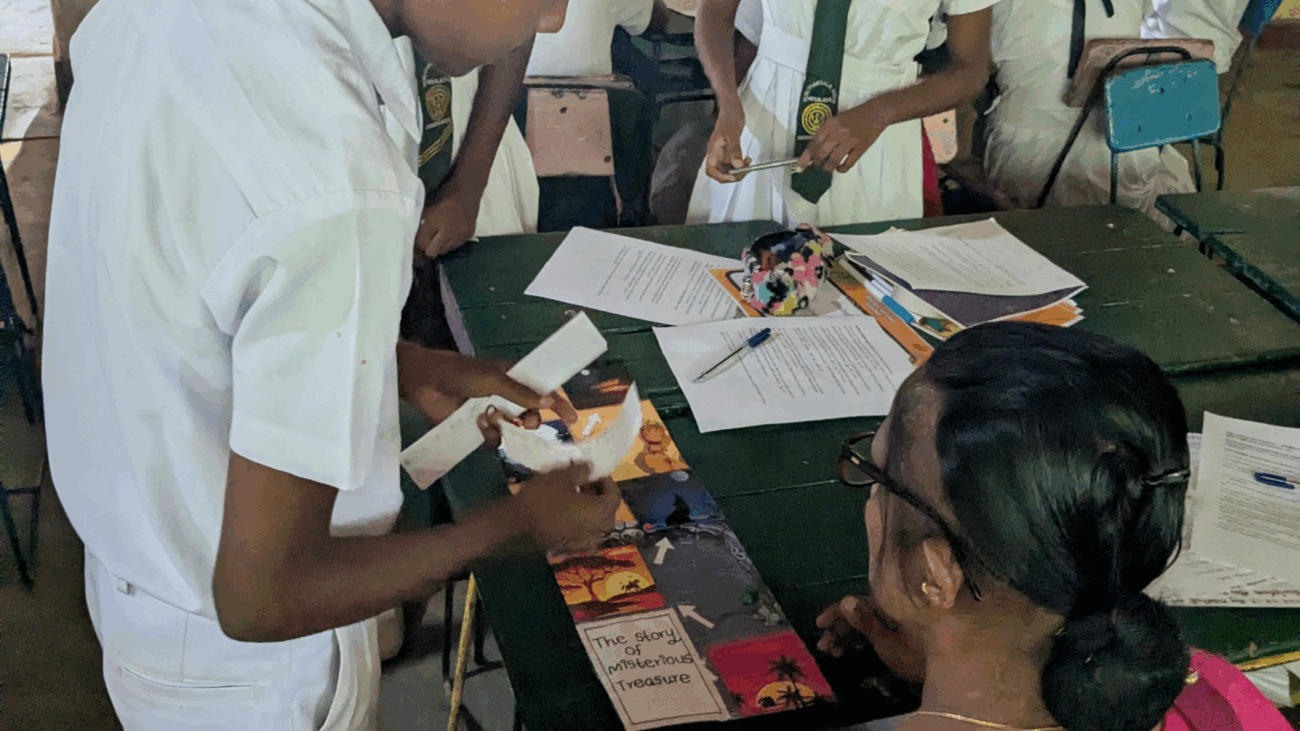
In the end, we encouraged them to continue working on their games and even to try creating games for other subjects like Maths, Science, or History. We showed them how a standard card deck can become a tool to build creative learning games.
The energy, creativity, and excitement we saw that day at Thaksala Maha Vidyalaya, Mahamukalanyaya, was unforgettable. It comes as a beautiful reminder of how much potential every child holds when we give them the space, freedom, and inspiration to create. We’re already looking forward to returning for more workshops soon.

